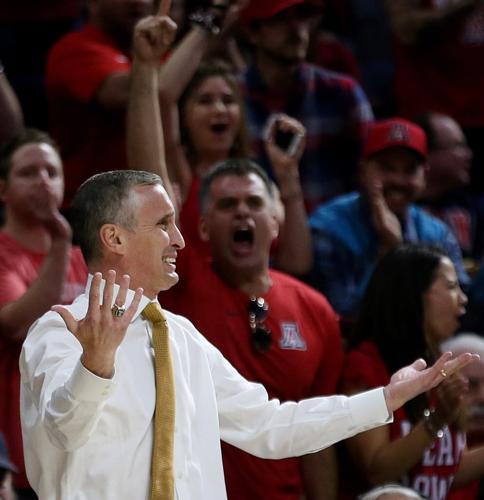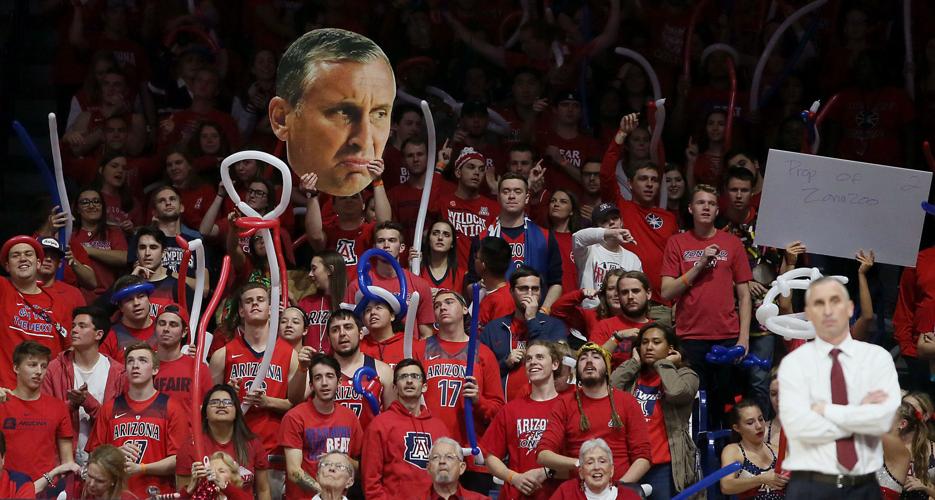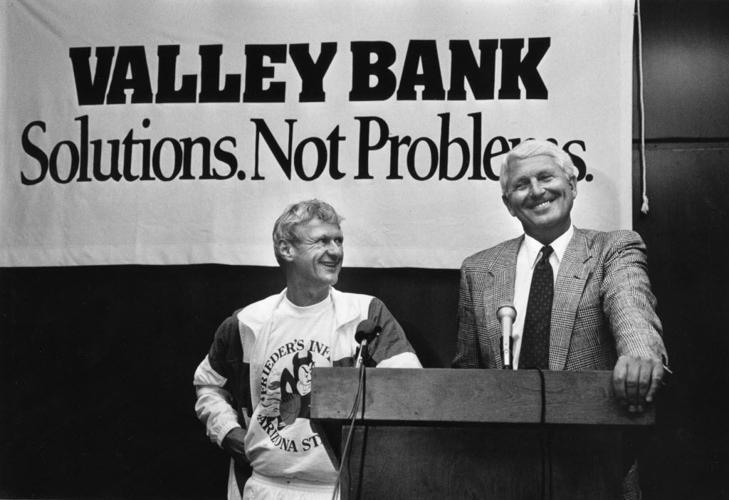УлшжжБВЅ rose to basketball prominence by hiring Lute Olson, who then recruited Sean Elliott and Steve Kerr. Once that group was assembled, it required another element.
It required visibility. It required diminishing the rivalry with УлшжжБВЅ State, and, in turn, the Pac-10.
Incredibly, there was not a Pac-10 game matching top-25 teams between February 1983 and January 1989.
Olson wanted more. He had to move beyond УлшжжБВЅ State.
Pac-10 basketball of the 1980s was powerless; the league went 3-12 in the NCAA Tournament over a five-year period, 1983-87. It was the One-and-Done league.
The annual УлшжжБВЅ-ASU game in Tempe was treated with disregard; there were more than 5,000 empty seats at Wells Fargo Arena in both 1985 and 1987. Few UA fans booed the Sun Devil coach because few feared him, or even knew who he was.
People are also reading…
Bob Weinhauer? Steve Patterson? Bob Schermerhorn?
As Olson prepared for the т88 Final Four season, he made the most resolute decision in the history of the UA-ASU series. Seeking visibility, determined to improve the schoolтs national reputation and strength of schedule, he chose to depreciate the rivalry with УлшжжБВЅ State.
Beginning in 1988, Olson strayed from the Pac-10 scheduling model in which, much like today, rivalry week was a single game. For the next 20 seasons, УлшжжБВЅ boldly used the ASU game in Tempe as a warm-up for a game of national significance later in the week.
It began with a game against No. 13 Illinois and followed with No. 3 Oklahoma. Then came a worrisome trip to play Villanova in its hostile campus gymnasium. Olson soon added No. 5 Cincinnati and the gameтs biggest names, UConn and North Carolina.
He was unrelenting, working on the UAтs strength of schedule, determined not to get punished on Selection Sunday because the Pac-10 wasnтt often a positive ranking variable.
You want degree of difficulty? In 1999, Olson willingly added an ASU-week game against No. 16 New Mexico, at the Pit, when the Lobos were almost impossible to beat in Albuquerque.
Not until Olson left, in 2008, did УлшжжБВЅ discontinue its practice of using the ASU week as a launching pad for a bigger game. His plan had served its purpose.
The impact of Olsonтs desire (and success) to widen the teamтs horizons can best be understood by these numbers: Since 1988, УлшжжБВЅ is 128-99 against top-25 teams.
ASU is 28-141.
So you might imagine the magnitude of Thursdayтs UA-ASU game at Wells Fargo Arena. The Sun Devils are 2-1 against ranked teams and as modest as that sounds, it is the first time since 1995 that ASU has had a winning record against ranked teams.
At noon Wednesday, all but 191 tickets had been sold, and 167 of those were scattered in nosebleed seats gathering dust since the arenaтs debut in 1975.
UA coach Sean Miller does not approach the Sun Devils the way Lute Olson did. On Monday, Miller said that itтs тreally good for our conferenceт that ASU has become relevant.
тEverything they do now is a positive for the league,т said Miller.
Can you believe that? For 25 years, Olson rarely acknowledged ASUтs existence, except to lord over Bill Frieder in those silly TV commercials in which Frieder willingly played a sap.
This is indeed a new age of basketball in this state. Can you imagine Oregonтs Dana Altman ever saying that it would be тreally goodт for Oregon State to become a national threat? Would UCLAтs Steve Alford ever tell anyone, with sincerity, that a rise by USC would be тreally good?т
Not hardly.
тThe depth of a conference speaks louder than just two teams,т Miller said.
He deserves credit for seeing a bigger picture, and for being man enough to acknowledge ASUтs new-found-muscle.
Besides, itтs not like Bob Schermerhorn is coaching the Sun Devils any longer.
The acquisition of Bobby Hurley is the most head-turning hire in Pac-12 basketball since Olson. From the day Hurley moved to Tempe, it was inevitable that the UA-ASU rivalry would return to its fire of the 1970s.
In May 1989, Olson announced that УлшжжБВЅ had scheduled a home-and-home series with Duke, for February of 1990 and 1991. Thatтs when Hurley was beginning to create a legend at Duke, and much like УлшжжБВЅтs teams of the era, thatтs when Hurley learned that the highest level of college basketball required playing against the best.
In his four years at Duke, Hurley played on Blue Devils teams that beat the Fab Five of Michigan, Shaquille OтNealтs LSU squad, the Don MacLean-led powerhouse of UCLA and a No. 1-ranked Syracuse club.
Amazingly, УлшжжБВЅтs teams of that period also beat the Fab Five, No. 1 Syracuse, MacLeanтs UCLA and Shaqтs LSU Tigers.
Hurley and УлшжжБВЅ have everything in common, especially playing on the big stage.
Now, after 40 years, the UA-ASU basketball rivalry has been restored.
































